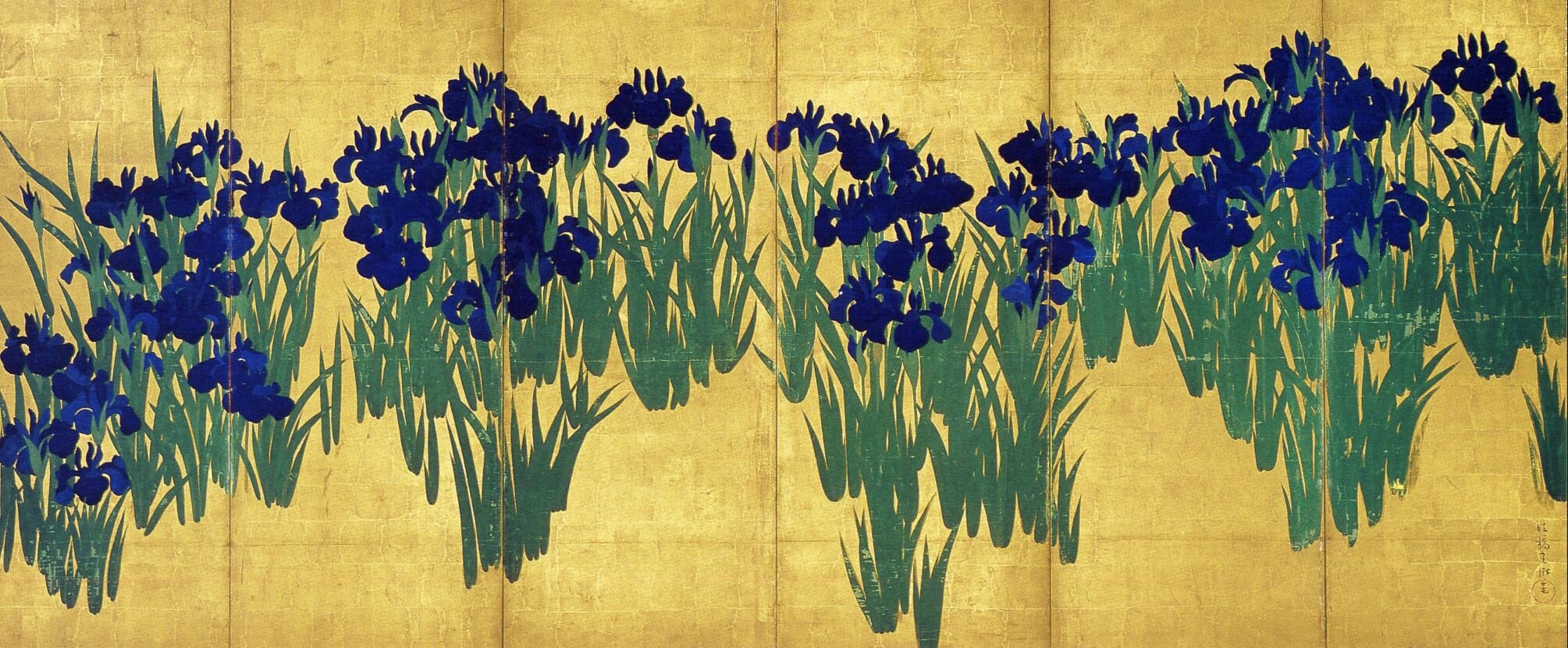The title of this project, KorinGami, encapsulates pretty well its nature. Composed of two Japanese words, Korin and Gami, it shows the inspirational origins and the executive outcome that make up this project, while all the same time hinting at its aesthetics.
Korin
It all started in 2015, when I stumbled upon the works of Japanese artist Ogata Korin. Living across the XVIIth and XVIIIth century, Ogata Korin helped revolutionize traditional Japanese arts thanks to the eclectic nature of his talents.
By fusing different characteristics of the most popular art schools of his time, he infused them with new life thanks to his remarkable composition skills and technical abilities.
In the XIXth century, when the art school founded by Korin and his master, Tawaraya Sotatsu (c. 1570 – c. 1640), was known as Rinpa (琳派, literally "Korin' School"), one of its exponents Sakai Hoitsu organized a major retrospective exhibition of the works of his master Ogata Korin still extant and produced a multi volume catalog of the exhibition, the 'Korin Hyakuzu' ("One hundred paintings by Korin", 1826; see Subjects section). Despite discarding the color subtlety of the originals, the black and white reproductions in the catalog manage to capture the essence of Korin's art in his magisterial use of negative space and composition harmony.
The distinctive tension that permeates Ogata Korin's works, derived from the combination between the use of negative space and the unusually cropped compositions (especially fans), was hard to resist for me. I have always been fascinated by the peculiarities of the European Art Nouveau aesthetics and I found in Ogata Korin's linework one of its inspirational sources.
One element that is conspicuously absent, when experiencing Korin's works from the 'Korin Hyakuzu', is the profuse use of gold foil and gold powder characteristic of the Rinpa school. We can just imagine how captivating it would have been experiencing the last rays of a summer sunset, gently reflecting off the gilded fan of your companion as she fans herself. The words of Jun'Ichiro Tanizaki in 'In Praise of Shadows’ capture perfectly the gentle warmth that a gilded screen or sliding door brought to the dimly lit traditional Japanese room; the inky darkness spreading from all the corners and enveloping the space around you only to be broken by that glimmer that appears and disappears as you move your head or the candles flicker.
This is the world that Korin's works inhabited and that I wanted to recreate in this project.
Gami
The second part of the title, the word "Gami", has a somewhat multifaceted interpretation. With the spelling I chose "雅味", Gami means graceful but phonetically it originates from the portion of the word "Origami" that means paper.
Japanese culture did always have a particular reverence for paper, probably because of its candor, so much so that, often, the packaging of a gift was as, if not more, important to the recipient than the gift itself (some of them weren't even opened for this reason). This is exemplified in fact that the Japanese word "Gami"/"Kami" refers as much to Paper as it does to Spirit, in the Shinto sensibility. Paper was also the main material I chose to accomplish this project. Using delicate but ordinary tissue paper and origami techniques, I sat forth in bringing into our physical world the flowers and plants imagined by Ogata Korin three centuries ago.

